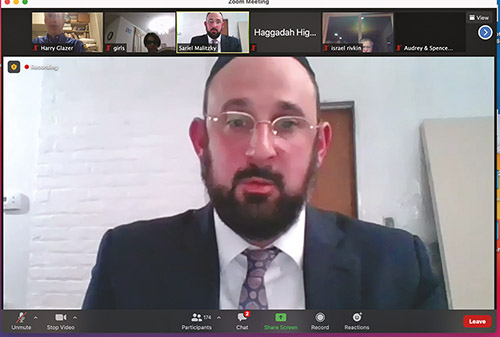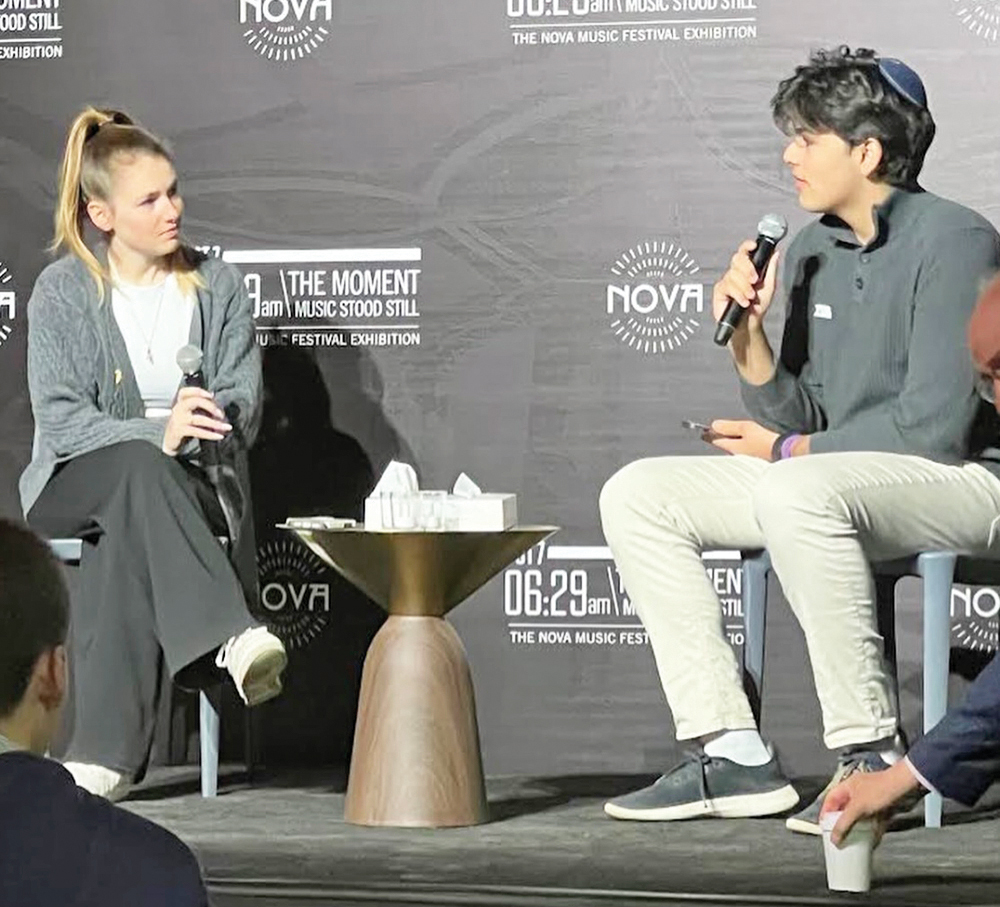


The Vaad Harabbanim of Raritan Valley presented their second annual Haggadah Highlights program on Zoom on Sunday evening, March 21, featuring 10 rabbis representing eight local synagogues, each offering a brief five minute dvar Torah on a section of the Haggadah. Over 180 community members joined in for the virtual seminar to gain insight and prepare for the upcoming holiday.
Rabbi Eliyahu Kaufman of Congregation Ohav Emeth in Highland Park jokingly noted that what made this program unique was limiting rabbis to a five-minute platform. Speaking about Kadesh, he noted that the Tzfat Emes drew viewers to the verse in Tehillim which states “Turn from evil and do good” (34:14). As the verse instructs, ordinarily we must first cleanse ourselves of sin before we can act in holiness; on the Seder night, we can reach spiritual heights before we even purify ourselves.
Rabbi Miodownik of Congregation Ahavas Achim in Highland Park, citing the Bretzlover Rebbe, asked why a green vegetable, dipped in salt water, is eaten before we delve into the story of the Exodus. Karpas is a raw, unprocessed food when contrasted with matzah, which is highly processed, that we eat towards the end of the Seder. The telling of the Exodus story is the process between these two, the effort that begins simply and grows more complex.
Rabbi Hillel Feldman, assistant rabbi of Agudath Israel of Highland Park, spoke about Yachatz, the quickest portion of the seder where we break a piece of matzah. Some say we are reminded that it is a poor man who eats broken portions of matzah and is happy with what he has. Rabbi Feldman shared that, according to the Kaf HaChaim, there is a custom for a child to take the broken portion outside and knock on the door. When asked who is there, the child answers “A Jew, coming from Egypt and going to Jerusalem,” and then delivers the matzah to the table.
Covering Magid, Congregation Ahavas Yisrael of Edison’s Rabbi Gedalia Jaffe told a story from A Passover Letter by Rav Aaron Lopiansky. In a letter to his son, Rav Lopiansky noted the tremendous responsibility that comes with passing Jewish tradition to each generation. At the Seder, the son would see his father don his kittel and tell the Passover story as 132 generations had done before him. When the father is wrapped in his kittel at the end of his days, the son would then bear the responsibility to impart the story to the 134th generation. Despite the many hardships that have befallen Jews in their efforts to practice their faith, the tradition has continued unbroken.
Rabbi Reuven Drucker of Agudath Israel of Highland Park continued with Magid and stated that it does not just tell a story, but has a theme of contrasts. The Haggadah teaches that “our ancestors were idol worshippers,” but we have moved on to follow the Torah. What that initial phrase conveys is that we need to be proper role models for our children, so they are imbued with the lasting values of our mesorah.
Also covering Magid, Rabbi Yosef Eichenstein of Ateres Shlomo in Edison shared a parable: During a very long wagon ride in the midst of a frigid Russian winter, a passenger turned to alcohol to tolerate the journey. The alcohol made him sleepy, and he slept through each day, only awakening at night to drink agai. After several periods of awakening in darkness, the passenger asked the driver if the long night would ever end. The driver responded that there were periods of light, but the passenger had slept through them. Although we are in the midst of a long exile, there are periods of light. We just may not see them.
Rabbi Eli Tal of Congregation Etz Ahaim in Highland Park questioned the type of bitter herb we use and noted that the Gemara instructs that maror should start sweet and end bitter. The rabbis of the Mishnah point out that there are five different vegetables that can be used as maror, and later rabbonim argued over whether horseradish or romaine lettuce are preferable. Relating this topic to the current era, he said that with the pandemic we have all had a potent taste of bitterness. Yet with the chesed we have seen in our communities, we have seen that bitterness blunted.
Rabbi Malitzky then spoke about Korech, and the “Hillel Sandwich” that we eat. He related a parable that Hillel was part of a group of people who heard loud wailing coming from a home in the town. Hillel was assured that it was not coming from his home as he had taught his family that everything—good and bad—is from Hashem and is for our benefit. With that level of belief, even a tragedy would be accepted with the understanding that there is good within the bad. Matzah is compared to redemption, and maror to bitterness. We eat the sandwich combining the two to show there is bad in good, and good in bad, and both are to our benefit.
Rabbi Yaakov Luban of Congregation Ohr Torah of Edison described Tzafun as hidden. Yes, the afikomen was hidden at the beginning of the Seder, but there are other meanings. Matzah is described as the bread of poor people and affliction. It is also called the “bread of redemption.” It can be both because one leads to the other. The affliction removes the impurities to allow for the redemption to occur, and we need the taste of the afikomen to stay with us to encourage the coming of Moshiach and redemption.
The final speaker, Rabbi Yechiel Horowitz of Khal Chassidim, covered Hallel. “Why is this night different from all other nights?” we ask at the beginning of the seder. As Ashkenizim, this night is different because at all other times Hallel is said in the daytime and at the Seder we say it at night. Night is actually an illusion, as the sun has not disappeared and is only hidden. Saying Hallel brightens the night to be like the day.













